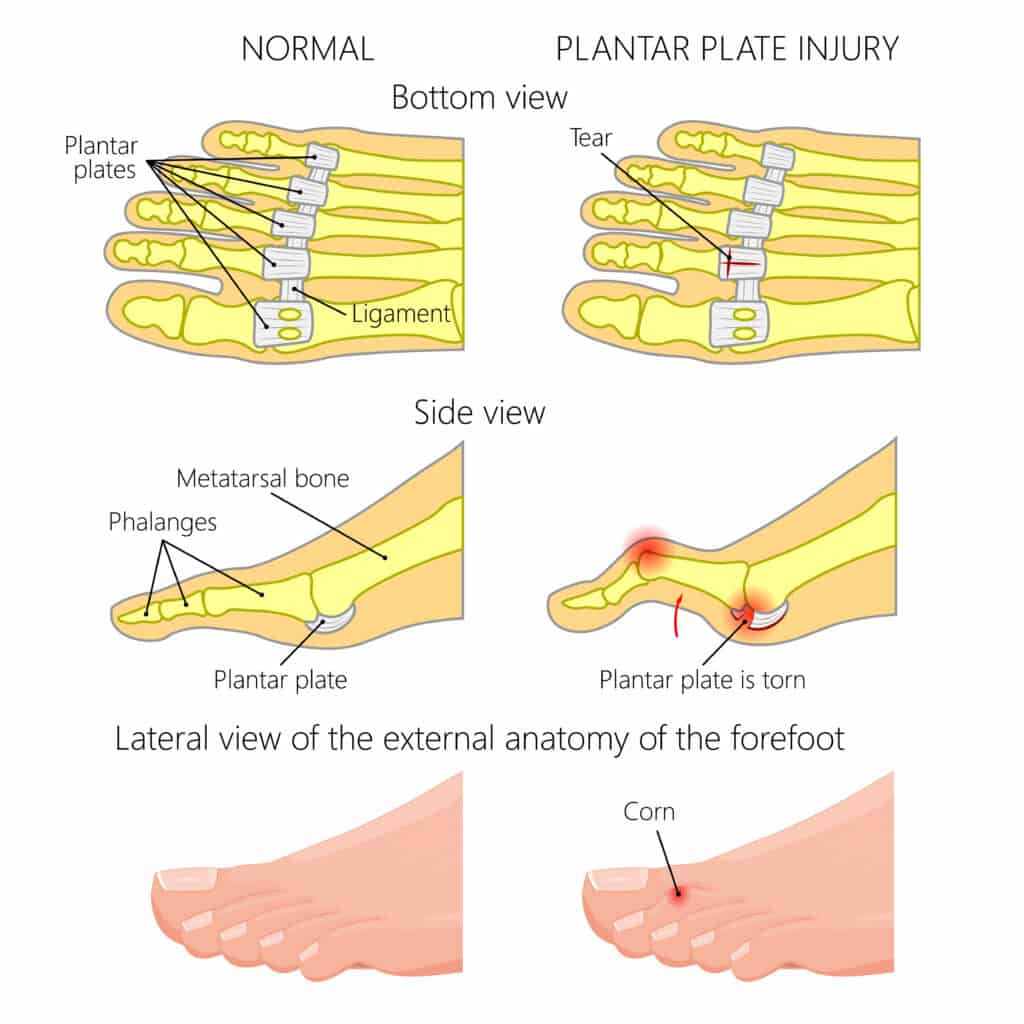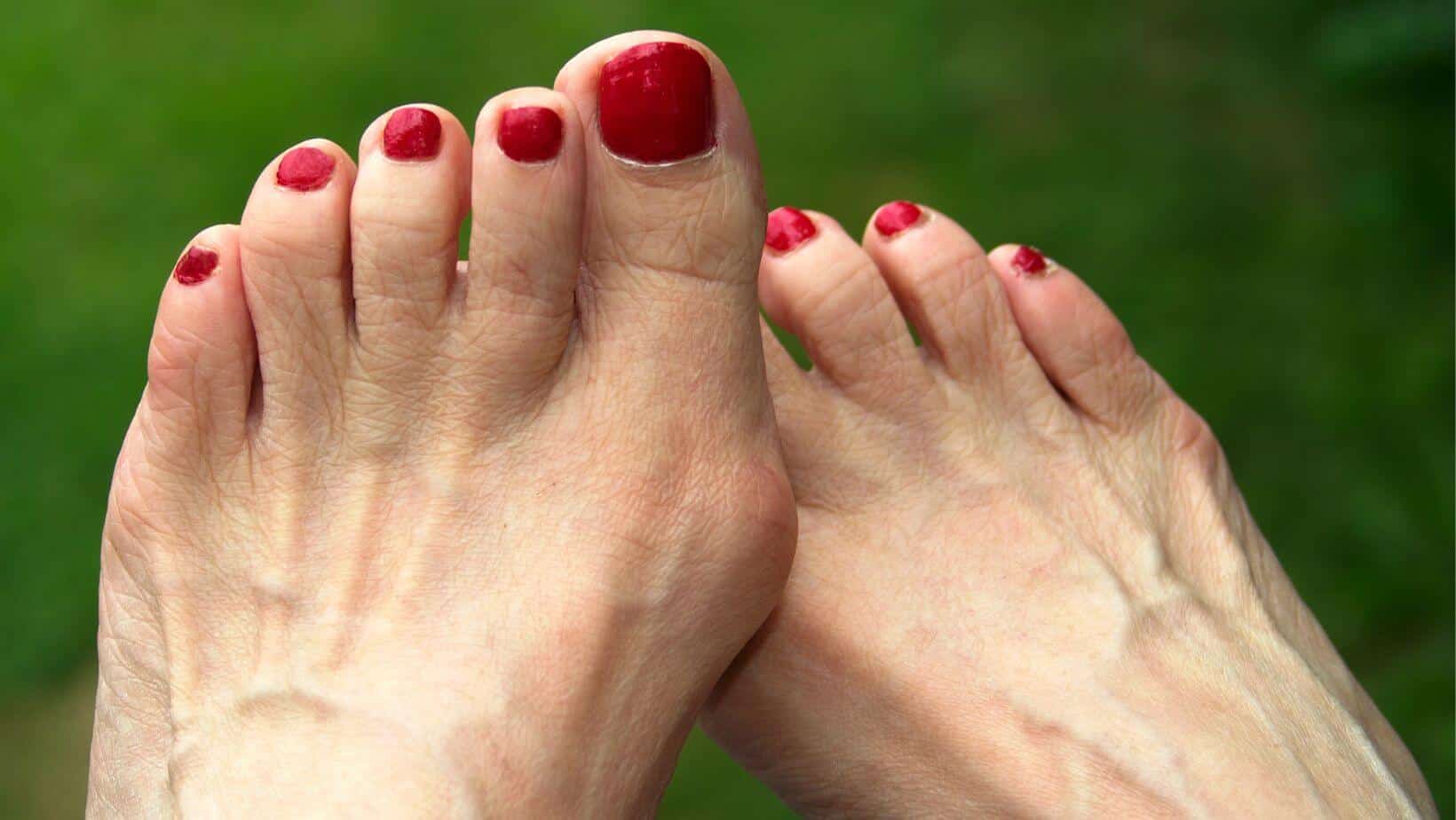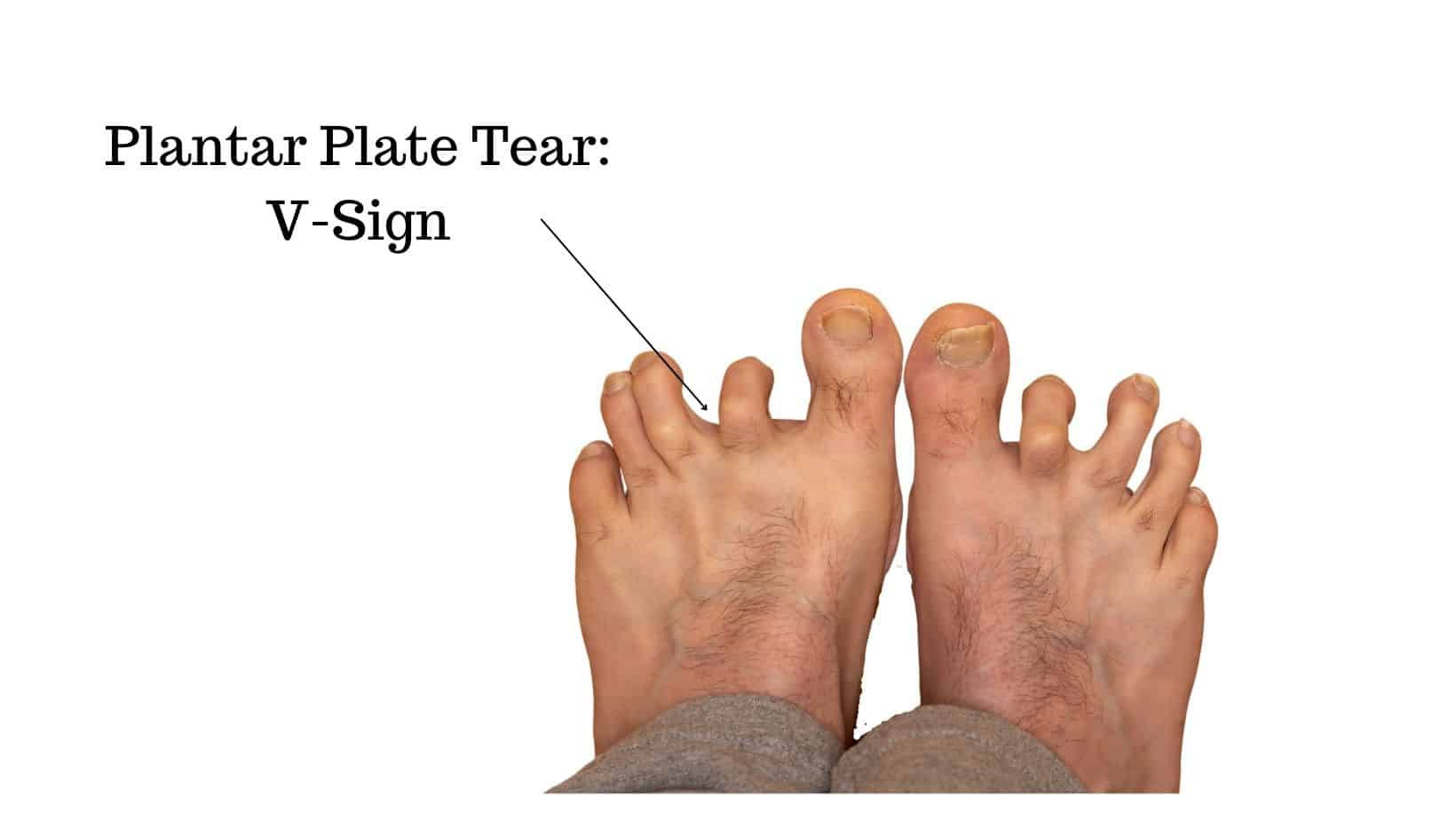Differential Diagnosis of the Big Toe
Read More >
A ligament attaches a bone to a bone, and the Plantar Plate is a strong ligament that spans across the forefoot and connects to the joint capsule of each metatarsophalangeal joint (MTJ). The primary function of the Plantar Plate is to provide stability to the joints of toes 2-5, and it also acts as an attachment site for the Plantar Fascia.
The Plantar Plate is placed under tension from the dorsiflexion of the toes, act as a cushion and supports weight-bearing forces such as running or jumping. Repeated hyperextension of the MTJ can lead to attenuation of the fibres within the Plantar Plate that leads to a Plantar Plate Tear.

Patients describe pain on the underside of their foot when walking, standing or running; as the condition deteriorates, it can become more constant.
Patients report a sensation of ‘walking on their bones‘, which feels like a lack of cushioning underneath their feet. There may be swelling on the top of the forefoot, and patients may notice a “V-Sign” where two of their toes deviate.
It can be painful to walk on uneven surfaces, walk up stairs or hills, run, jump, dance or barefoot walking indoors.

Plantar Plate Tears can be caused by a repetitive overload of the Plantar Plate or by a sudden overload of the Plantar Plate. Examples of this are a sudden increase in running volume or changing from rearfoot to forefoot running.
If you have a bunion, this can overload the 2-5th metatarsals, causing excess pressure and an eventual Plantar Plate tear.
Irregular metatarsal (toe) lengths can cause excess pressure through the Plantar Plate.
A Hammer Toe or poor pronation control can also lead to excess pressure on the Plantar Plate.
A history of cortisone injections to the forefoot can weaken the Plantar Plate, making it more susceptible to a tear.
A clinical examination from a Podiatrist or a Physical Therapist can identify the presence of a Plantar Plate Tear using clinical tests such as the Digital Lachman’s Test or Churchill sign (V-sign). A positive Digital Lachmans sign has a sensitivity of 80.6% and a specificity of 99.8%
An MRI or an Ultrasound scan are best placed for an accurate diagnosis of a Plantar Plate Tear. An ultrasound is more easily accessible and cheaper. At the same time, an MRI is marginally more accurate, with a sensitivity of 97.1%, specificity of 100%, and accuracy of 97.8% for diagnosing Plantar Plate Tears, compared to Ultrasound, which has a sensitivity of 93% and specificity of 33%.
An x-ray in weight-bearing can help identify a subluxation and for ruling out other pathologies.
Notably, in a study of 160 asymptomatic patients, 35% had Plantar Plate Tears.

Mild swelling of the underside and top of the forefoot with tenderness on palpation of the MTPJ
Moderate swelling with a noticeable change in toe position
Swelling of the entire MTPJ with a deviation of the toes and potential subluxation of the joint.
Home treatment for a Plantar Plate Tear should include offloading the foot, icing, anti-inflammatories, no barefoot walking and non-impact exercise.
Strapping and Taping can be highly effective at offloading the Plantar Plate Tear and allowing it to heal in an optimal position; therefore, having a consultation with a Physical therapist or a Podiatrist as soon as possible is strongly recommended.
Taping for a Plantar Plate Tear is simple; the affected toe should be placed into plantarflexion using zinc oxide tape. A gait assessment is beneficial to identify any biomechanical reasons that may lead to an overload of the Plantar Plate. The results of this assessment can help a clinician develop a strengthening and stretching rehabilitation protocol for the patient.
Guidance from the clinician on footwear is vital as a stiff, low-profile shoe can reduce the amount of extension of the toes through the gait cycle. A custom insole is helpful to offload the Plantar Plate, and when combined with taping and stiff shoes, it is a highly effective treatment.
A steroid injection can benefit stubborn cases that fail to improve despite the appropriate care. An injection is generally a corticosteroid injection, ultrasound–guided into the joint to reduce inflammation levels. Following the injection, a period in a walking boot before weaning out of this into stiff shoes and orthotics can be effective.
The last option for a Plantar Plate Tear is surgery. Several types of surgery can be effective, but we recommend speaking to an orthopaedic consultant.
In our experience, if a Plantar Plate Tear is left untreated, the symptoms will likely deteriorate slowly. In some cases, worsening symptoms can lead to hammer toe formation, capsulitis of the second toe, Morton’s Neuroma or arthritis of the MTP joint.
This article is written by James McCormack, a Lower Limb Specialist who is an expert in treating Plantar Plate Tears.
This is not medical advice. We recommend a consultation with a medical professional such as James McCormack if you are experiencing any of the symptoms discussed in this article. James offers Online Physiotherapy Appointments weekly and face-to-face appointments in his London clinic.